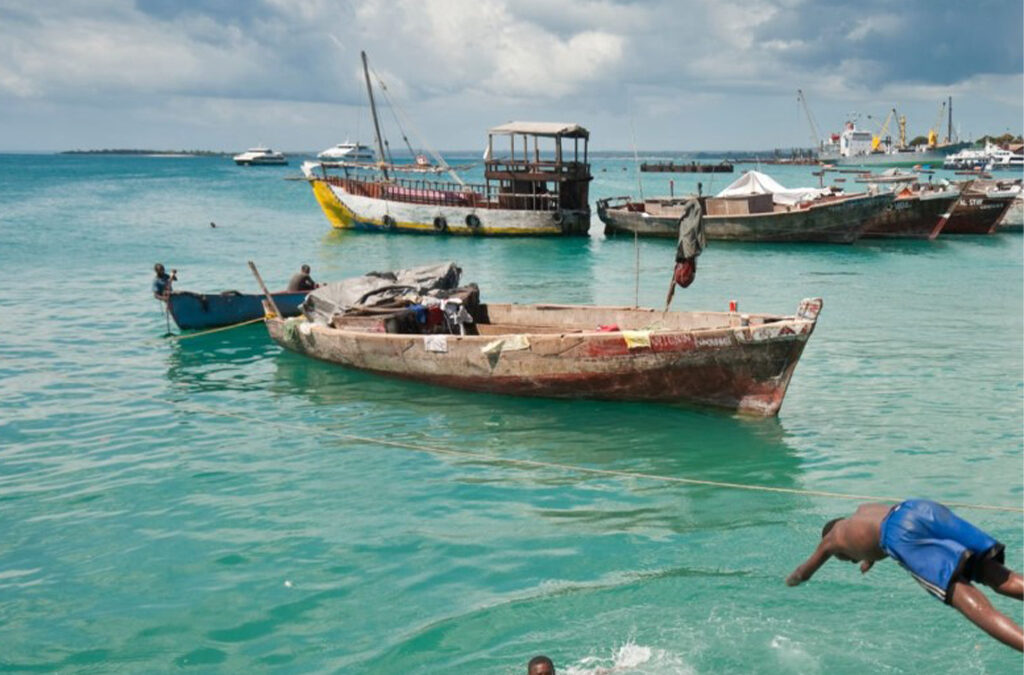- GET IN TOUCH WITH US:
- +256 753518160
- +256 777842166
- info@experiyatourcompany.com

Can You Do a Self Drive Safari?
May 12, 2025
How to Experience Maasai Culture?
May 14, 2025Why Is Tanzania’s Coastline Stunning?
Tanzania’s coastline is a breathtaking strip of paradise that stretches for over 1,400 kilometers along the western edge of the Indian Ocean. Fringed with powdery white beaches, swaying palm trees, coral reefs teeming with marine life, and centuries-old trading ports, this East African coastline offers a stunning mosaic of natural beauty, cultural history, and warm hospitality. For those lucky enough to explore it, the Tanzanian coast feels like a whispered secret, waiting to be discovered and cherished.
A Natural Masterpiece
The first impression of Tanzania’s coast is its sheer natural beauty. From the mainland shores of Bagamoyo and Pangani to the exotic islands of Zanzibar, Mafia, and Pemba, every stretch feels like it was carved from a dream. The Indian Ocean glistens in a spectrum of blues, offering calm and inviting waters perfect for swimming, snorkeling, and diving.
Coral reefs, some of the richest and most diverse in the world, provide shelter for countless marine species. Gliding alongside sea turtles or watching playful dolphins leap through the waves becomes more than a vacation activity its a soul-stirring experience. These underwater gardens are not just vibrant ecosystems; they are silent storytellers of a life beneath the surface, full of color and wonder.
The Islands That Time Forgot
Zanzibar, Mafia, and Pemba Islands each bring a different flavor to the Tanzanian coastline, yet all share a deep sense of mystique and tranquility. Zanzibar, known as the Spice Island, is a blend of Arabic, Indian, European, and African influences. Stone Town, a UNESCO World Heritage Site, enchants with its narrow alleys, carved wooden doors, and centuries-old architecture. The scent of cloves and cinnamon floats through the air, making every walk through the old town a sensory adventure.
Mafia Island, less traveled and far quieter, offers a sense of untouched serenity. Here, nature speaks louder than people. The Marine Park surrounding the island is a sanctuary for divers and marine conservationists. Whale sharks, the gentle giants of the sea, make their seasonal visit a humbling sight for anyone who witnesses it.
Pemba, often referred to as the “Green Island,” is a lush and fertile escape where spice farms flourish and local traditions remain strong. The coral reefs around Pemba are some of the healthiest in the region, providing spectacular dive sites that few have explored.
A History Carved by the Tides
Tanzania’s coast is not only beautiful but deeply historic. For centuries, it was a vital part of the Indian Ocean trade network, connecting Africa to the Middle East, India, and even China. Ancient towns like Kilwa Kisiwani, another UNESCO World Heritage Site, hold the ruins of once-great sultanates and grand mosques built from coral stone. These ruins are quiet witnesses to a bygone era of maritime glory and cross-cultural exchange.
Bagamoyo, once the final stop for traders and missionaries traveling inland, still holds echoes of the past. The name itself means “lay down your heart,†hinting at the emotional weight carried by those who passed through. Walking through its old quarters, visiting the crumbling German fort or the Catholic mission, brings history to life in an intimate and moving way.
A Coastline of Culture and Community
What sets Tanzania’s coast apart is not just its scenery but its people. Warm smiles and gentle greetings are everywhere. The Swahili culture rich in poetry, music, cuisine, and architecture infuses daily life with grace and rhythm. Conversations happen slowly, meals are shared generously, and hospitality feels deeply rooted in the way of life.
The coastal cuisine is another revelation. Freshly caught seafood, grilled over open flames or simmered in coconut milk and spices, tells stories of trade, tradition, and creativity. Octopus curry, tamarind fish, pilau rice, and Zanzibar pizzas are more than dishes they are expressions of the land and sea, and the people who live between them.
Festivals like Mwaka Kogwa in Makunduchi and the Zanzibar International Film Festival draw both locals and travelers into a shared celebration of culture, heritage, and creativity. On these occasions, the coastline comes alive with music, laughter, and color.
Nature’s Rhythm and the Power of Simplicity
One of the most stunning aspects of the Tanzanian coastline is the rhythm of life. It flows with the tide, slow and steady. There is time to watch the sun rise over the ocean, to follow the flight of seabirds, or to simply breathe in the salt air without hurry. This sense of time less structured, more felt creates space for reflection and peace.
For those accustomed to the pace of city life, the Tanzanian coast offers something radical: simplicity. And in that simplicity lies healing. It is not uncommon to find a quiet spot on a beach and feel something shift stress melting away, thoughts becoming clearer, priorities realigning.
Conservation and Hope for the Future
Tanzania’ s coastline is also a place of hope. Across the region, local communities, NGOs, and conservationists are working to protect what makes it special. Efforts to combat coral bleaching, overfishing, and coastal erosion are growing stronger. Marine protected areas, sustainable tourism practices, and education programs are helping to ensure that the beauty seen today will still be there tomorrow.
There is something deeply reassuring about this balance between enjoying a paradise and working to protect it. It speaks to the possibility of travel that is respectful and regenerative.
Final Thoughts: A Coast That Touches the Soul
Tanzania’s coastline is not just a destination it is a feeling. It’s the warm breeze after a long journey, the silence of a dhow gliding across turquoise water, the unexpected kindness of a stranger offering directions, the sound of the adhan echoing at sunset in Stone Town. It’s the knowledge that somewhere on this coast, nature and culture are not in competition, but in harmony.
This stunning stretch of Africa offers more than just beautiful views it offers perspective. It reminds that beauty can be simple, that history matters, that community is powerful, and that peace is often found where land meets sea.




